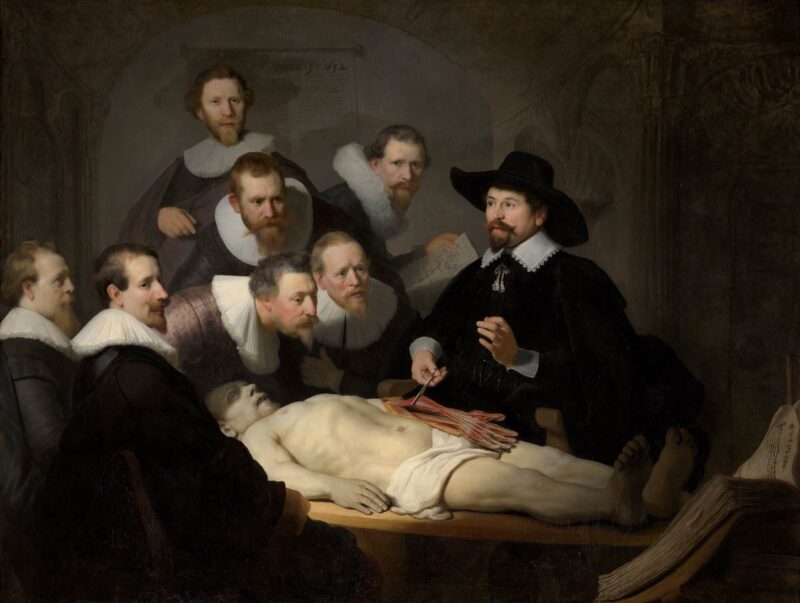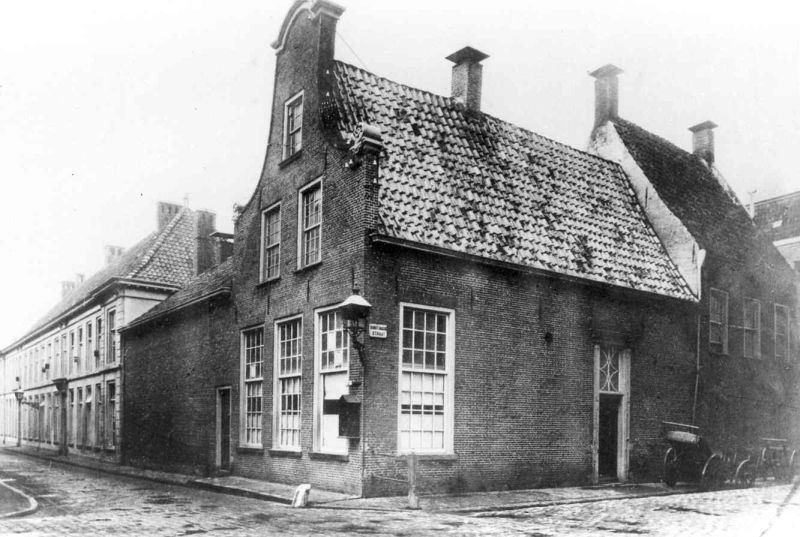waybackmachine
Patients in class
and anatomy lessonsCutting into dead bodies
It’s likely that very few of the people lifting weights in the Train More gym at the Munnekeholm are aware that the place where they’re trying to get bigger muscles used to be where people cut up and studied other people’s muscles.
The building on the corner of the Schuitemakersstraat, a stone’s throw away from the Akerk, used to house the university hospital, the Academisch Ziekenhuis, around the year 1900, before it moved to the Oostersingel on the other side of the city centre.
The hospital started out with just forty beds. For comparison, the UMCG currently has nearly 1,350. It was also the place where medical students were taught everything they needed to know about the human body.
Education wasn’t just theoretical, but also practical: there were lectures involving live patients and dead bodies on the cutting table, something Rembrandt had immortalised 250 years earlier in his famous painting ‘The Anatomy Lesson of Dr Nicolaes Tulp’.

Around the turn of the twentieth century, anatomy lessons were important in training new doctors. After all, they didn’t have any of the modern technology that is so commonplace today.
While x-rays had been invented at the end of the nineteenth century, they weren’t used everywhere just yet. Besides, x-rays didn’t show everything. Modern techniques such as CTs and MRIs were still years away.
There also weren’t any preservatives to keep bodies from rotting. That’s why anatomy lessons at Dutch universities generally took place during the winter. If it got too warm, like during the summer, the bodies would start to smell quite quickly.

These days, bodies are embalmed to prevent this from happening. In some cases, they’re frozen, says Janniko Georgiadis, head of the section anatomy and medical physiology at the UMCG. On top of that, modern technologies such as simulation are also important tools for doctors in training.
But cutting into real bodies remains an important skill to practise. ‘Helicopter pilots can train in simulators all they want, but they’ll have to get up in the air at some point.’ The same goes for doctors ‘who cut’. ‘After all, you can’t practise on live patients’, says Georgiadis. An understatement, indeed.
Complete bodies as depicted in Rembrandt’s painting are generally reserved for surgeons in training and refresher courses for medical experts. Bachelor and master students mainly work with medical specimens. This teaches them about the human body because they can not only look at the specimens, but touch them as well: how does cartilage feel, what does a ligament look like, how do joints move? It’s easier if you have the actual body parts.
Georgiadis: ‘Our goal is to use bodies as effectively and efficiently as possible. We re-use most bodies. Some for a few years, and some for as long as ten years.’
Sources for this article: website for Academic Medical Centre’s Museum on human anatomy Vrolik in Amsterdam, the UMCG website section ‘Een reis door de tijd: van Nosocomium Academicum tot UMCG’, and ‘Universiteit van het Noorden’ (part 2) by UG historian Klaas van Berkel.